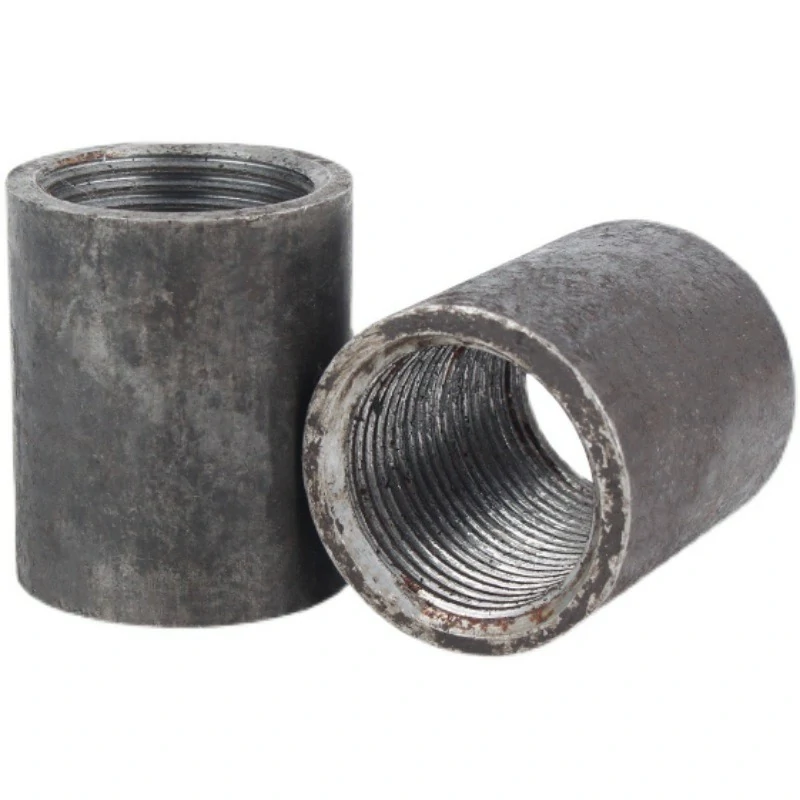Using ductile iron grooved fittings in a piping network offers several advantages, making them a popular choice in various industrial, commercial, and municipal applications:
- Ease of Installation:
- Grooved fittings are designed for simple and quick installation. The grooved system requires minimal training and specialized tools compared to traditional welding or threading methods, reducing installation time and labor costs.
- Flexibility and Versatility:
- Ductile iron grooved fittings provide flexibility in system design and layout. They allow for easy adjustments, expansions, or modifications in the piping network, accommodating changes in the system without the need for extensive rework.
- Adaptability to Various Materials:
- Grooved fittings are compatible with various piping materials like ductile iron, steel, stainless steel, copper, and PVC. This versatility enables the connection of different pipe materials within the same system.
- Reduced Risk of Hot Work:
- Unlike welding methods, grooved fittings eliminate the need for hot work or flame-based processes, reducing fire hazards and enhancing safety during installation.
- Uniform Stress Distribution:
- The grooved coupling system evenly distributes stress along the length of the pipe, reducing localized stress concentrations and the risk of failure due to fatigue or weak points.
- Vibration Dampening and Noise Reduction:
- Grooved fittings can absorb and dampen vibrations within the piping system, reducing noise levels and minimizing the impact of mechanical vibrations on the overall system.
- System Maintenance and Accessibility:
- The modular nature of grooved fittings allows for easy access to system components, facilitating maintenance, repairs, or inspections without significant disruption to the entire network.
- Consistency in Sealing and Leak Prevention:
- Properly installed grooved fittings with gaskets provide reliable and consistent sealing, minimizing the risk of leaks. Gasket materials are selected for their resilience and ability to maintain a secure seal over time.
- Pressure and Temperature Ratings:
- Grooved fittings are available in various pressure and temperature ratings, allowing for their use in a wide range of applications, from low-pressure systems to high-pressure industrial settings.
- Cost-Efficiency:
- The simplicity and speed of installation, reduced labor costs, and fewer required tools contribute to overall cost savings. Additionally, their adaptability and ease of system modifications can further reduce expenses.
- Environmentally Friendly:
- Grooved fittings produce minimal waste during installation compared to traditional methods. Their reusability and adaptability also support environmentally conscious practices.
- Industry Acceptance and Standardization:
- Grooved fittings have gained widespread acceptance across various industries and have established standardized dimensions and specifications, ensuring compatibility and interchangeability among manufacturers.
These advantages make ductile iron grooved fittings an attractive choice for piping systems, Ductile iron Grooved fittings offering efficiency, flexibility, and reliability in various applications.
What materials are commonly used to manufacture Ductile iron Grooved fittings?
Ductile iron grooved fittings are manufactured using materials carefully chosen for their durability, strength, and compatibility with various applications. The materials commonly used for manufacturing ductile iron grooved fittings include:
- Ductile Iron (Nodular Cast Iron):
- The primary material used in manufacturing grooved fittings is ductile iron, also known as nodular cast iron. Ductile iron offers excellent mechanical properties, including high tensile strength, impact resistance, and ductility. Its nodular graphite structure provides enhanced flexibility and toughness compared to gray cast iron.
- EPDM (Ethylene Propylene Diene Monomer) Gaskets:
- Gaskets are an integral part of grooved fittings, providing a secure seal between components. EPDM rubber is commonly used for gaskets due to its excellent resistance to heat, weathering, and various chemicals. EPDM gaskets maintain their elasticity and sealing properties over a wide range of temperatures and fluids.
- Stainless Steel Components:
- In some grooved fittings, stainless steel components are used, particularly for certain parts like bolts, nuts, or retainers. Stainless steel offers corrosion resistance and durability, enhancing the reliability of the fittings, especially in environments prone to corrosion.
- Other Rubber Compounds:
- In addition to EPDM, other rubber compounds or elastomers may be used for gaskets in grooved fittings, depending on specific application requirements. These may include materials like nitrile (Buna-N), neoprene, or silicone, chosen for their compatibility with different fluids and operating conditions.
- Polymer Coatings or Linings:
- Some grooved fittings may feature polymer coatings or linings applied to the interior or exterior surfaces for enhanced corrosion resistance or protection against aggressive fluids. These coatings may include epoxy, polyethylene, or other specialized materials based on the application’s needs.
- Thermoplastic Components:
- In certain specialized grooved fittings or accessories, thermoplastic materials such as PVC (Polyvinyl Chloride) or CPVC (Chlorinated Polyvinyl Chloride) may be used for specific components or seals, especially in applications where resistance to certain chemicals or fluids is required.
These materials are chosen based on their properties, performance characteristics, and suitability for different operating conditions. The combination of ductile iron, gaskets, and other components ensures the reliability, durability, and compatibility of grooved fittings in a wide range of piping applications across various industries.
